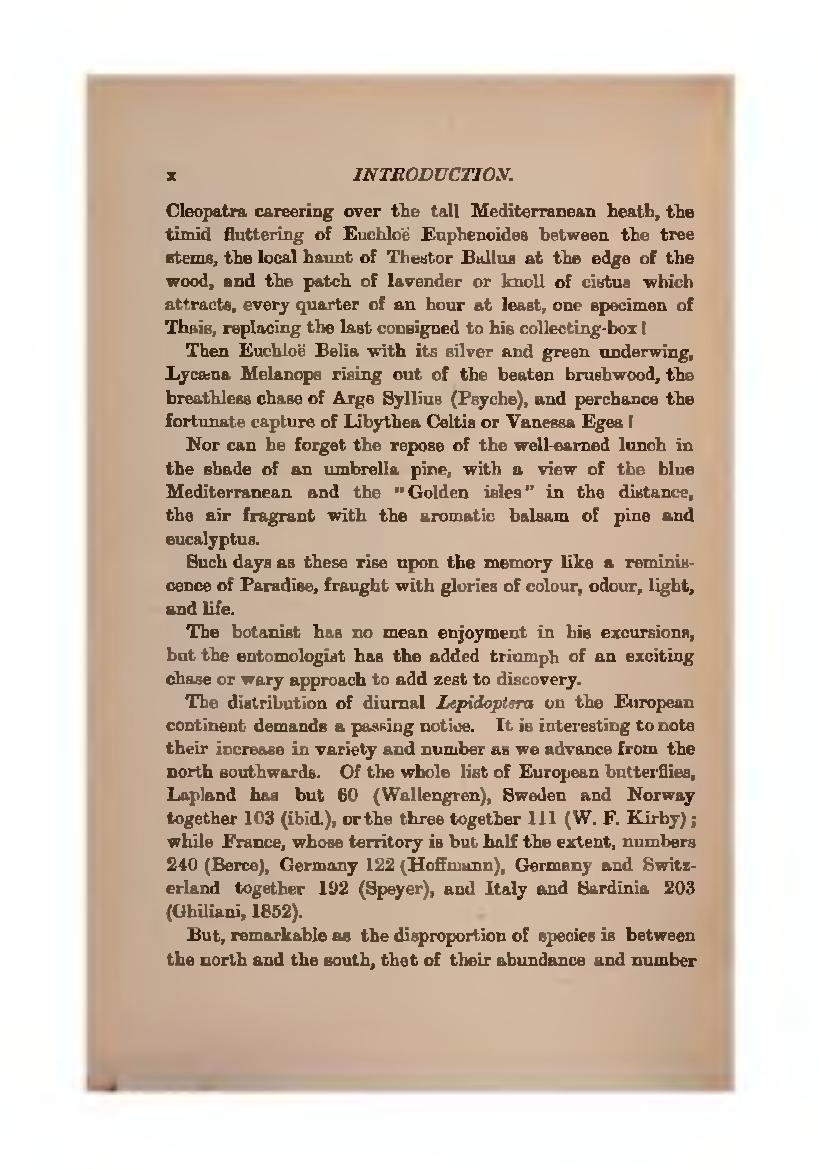Cleopatra careering over the tall Mediterranean heath, the timid fluttering of Euchloe Euphenoides between the tree Btems, the local hauot of Thestor Ealliis at the edge of the wood, and the patch of lavender or knoll of cistus which attracts, every quarter of an hour at least, one specimen of Thais, replacing the last conBigiied to his collecting-box.
Then Euchloë Belia with its silver and green nnderwing, Lyctbna Melanops rising out of the beaten bitiahwood, the breathless chnse of Arge Syllius (Psyche), and perchance the fortunate capture of Libythea Celtis or Vanessa Egea !
Nor can he forget the repose of the well-earned lunch in the shade of an umbrella pine, with a view of the blue Mediterranean and the " Golden islea " in the distance, the air fragrant with the aromatic balsam of pine and eucalyptus.
Such days as these rise upon the memory like a reminiscence of Paradise, fraught with glories of colour, odour, light, - and life.
The botanist has no mean enjoyment in his excursions, but the entomologist has the added triumph of an esciting chase or wary approach to add zest to discovery.
The distribution of diurnal Lepidopiura on the European continent demands a passing notiue. It is intei'esting to note their increase in variety and number as we advance from the north southwards. Of the whole list of European butterflies, Lapland has but 60 (Wallengren), Sweden and Norway together 103 (ibid.), or the thi-eo together 111 (W, K. Kirby) ; while France, whose territory is but half the extent, numbers 240 (Berce), Germany 122 (Hoffmunn), Germany and Switzerland together 192 (Speyer), and Italy and Sardinia 203 (Ghiliani, 1852).
But, remarkable as the disproportion of species is between the north and the south, that of their abundance and number
